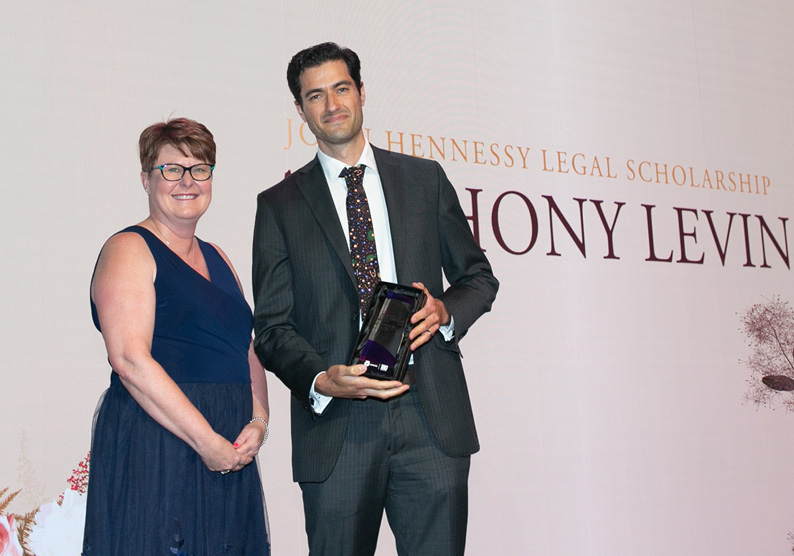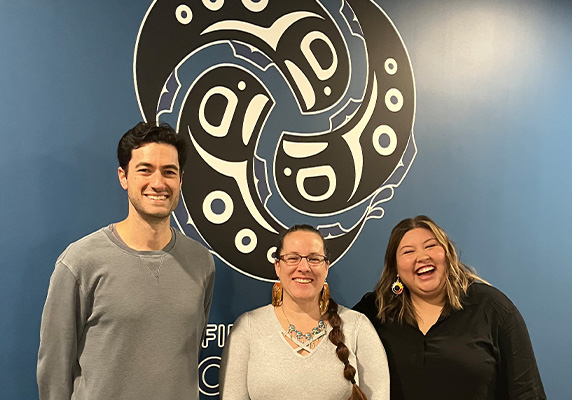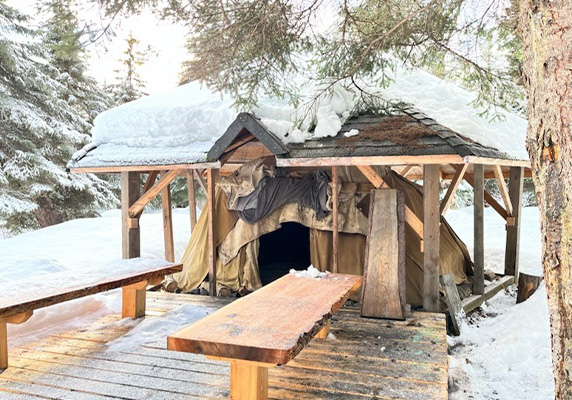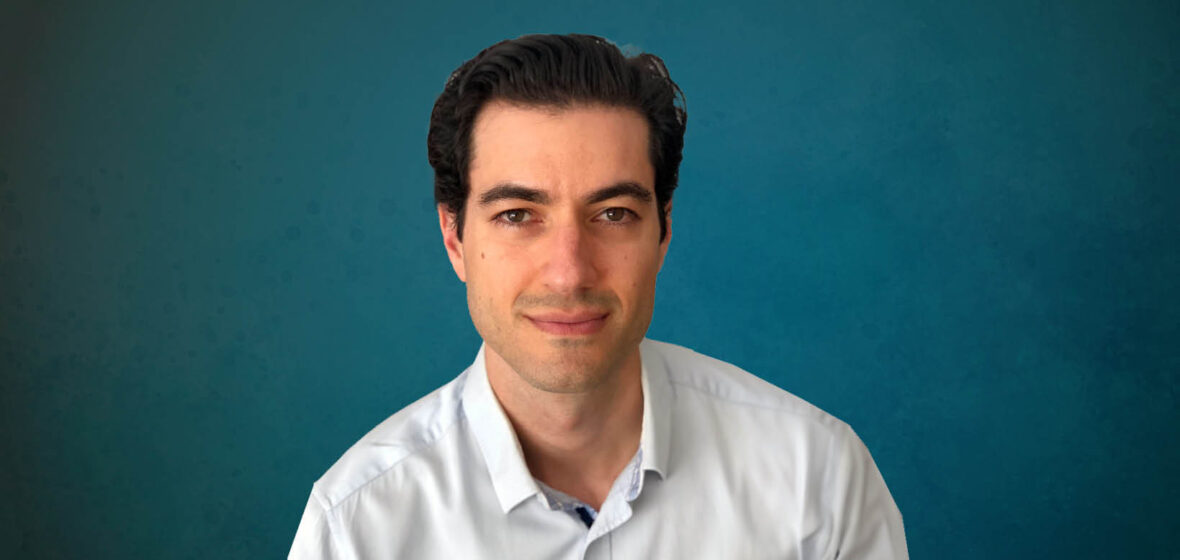Winning the John Hennessy Legal Scholarship last year enabled Legal Aid solicitor Anthony Levin to study a health justice initiative in Canada. The learnings from this program, Levin believes, could lead to improved health and social outcomes for Indigenous prisoners.
A year ago, at the Law Society’s Annual Members’ Dinner and Awards Night, Anthony Levin was elated to be the recipient of the John Hennessy Legal Scholarship. This award is made to a public sector solicitor interested in undertaking a research project on legal systems in another jurisdiction.
“I’ve been working on prison health issues for about 10 years,” says Levin, who is Manager and Senior Solicitor in Legal Aid NSW’s Human Rights team.
He was researching on how the unmet health needs of Aboriginal and Torres Strait Islander people contribute to the cycle of incarceration, and how effective, culturally safe continuity of care could address health inequalities – for the benefit of both prisoners and the public.

Levin’s research led him to discover a new initiative in Prince George, British Columbia (BC), Canada. This is a patient navigator system for Indigenous prisoners, Levin explains, where each Indigenous patient navigator (IPN) “has the job of helping Indigenous people navigate the health system inside and also potentially on their return to the community outside, depending on the location of the navigator and the jail that they’re working in.
“So in some locations and prisons, the IPNs work almost exclusively with people inside, spending time with them to build rapport during cultural activities and culturally safe spaces that were purpose built in the prison.”
“It struck me this could be useful for our justice system,” Levin adds. “I think there are certain universal principles that can be applied to addressing health inequalities.”
The scholarship enabled him to travel to BC and observe the IPN program across the province.
It began with a letter
A year on from the award ceremony, on the eve of the 2023 Awards Night, Levin speaks to LSJ about the experience, his learnings from his research – and his initial motivation.
It’s clear from the outset that Levin’s gently spoken manner belies his deep commitment to seeking justice.
In terms of health justice, his commitment began, he says, “with a pretty devastating letter I received from an Aboriginal man in custody.
“He had had an accident in prison with his bedding and it had crushed his finger. This was a very serious injury. He needed medical care and he didn’t get it. And as a result, he had a permanent disability. He was an artist, and now he wasn’t able to paint anymore.”
“It was the first letter of that kind that I received from a client in custody and it really stayed with me and it made me feel like there was something deeply wrong with the system. And there were other such cases.”
Levin is a true researcher: measured, and respectful of perspectives that differ from his own. He hastens to add, “It is very complex to achieve equivalent care in custody. By that I mean care that acknowledges the unique disadvantages that prisoners face in accessing healthcare services, and entails a proportionate amount of resources to achieve that.”
“I want to make clear that there are a lot of good people working in justice, health and corrective services trying to make that a reality. But of course, they face their own challenges and resource constraints”.
The story of the injured artist, Levin says, “was a catalyst for me in wanting to pursue strategic advocacy that might achieve even a marginal improvement in access to healthcare in prison.”
Seeking restorative modes of justice
But Levin’s drive for justice didn’t begin with the artist’s letter. He has always, he says, “been strongly motivated by a deep sense of social justice.
“I am a grandchild of Holocaust survivors so I had a very early appreciation for the impact of gross injustice, and that unavoidably coloured my perception of the world.”
He adds, “Having seen what had happened to my family, I felt magnetically drawn to ways in which we can use the legal system for repairing violations of people’s human rights, and for restorative modes of justice.”
‘I felt magnetically drawn to ways in which we can use the legal system for repairing violations of people’s human rights, and for restorative modes of justice.’
Levin studied law at UNSW, which aligned with his values – “it was relatively altruistic and has a strong social justice tradition.”
Volunteering at Villawood Detention Centre during his studies provided a further impetus for focusing his career human rights issues. He attributes the strong pull he felt to the refugee sector to a combination of his grandparents’ refugee background and “a strong desire to want to give back because of the level of privilege that I was lucky enough to have growing up, and feeling I really wanted to be of service to my community.”
During his studies, Levin worked at Kingsford Legal Centre, with now Sex Discrimination Commissioner Anna Cody as his supervisor: “I couldn’t have asked for a better supervisor”. He also worked as a legal researcher for Professor Jane McAdam, then at the University of Sydney and now Scientia Professor and Director at the Kaldor Centre at UNSW.
“They had a profound impact on me and helped propel me towards Legal Aid, which I entered in 2006. It really galvanised me in terms of my commitment to social justice work and got me very excited about entering the sector, because I was able to do work that I felt was helping people who needed help. And I was motivated by what has always driven me in working in the legal aid sphere: to find ways to make improvements to the system.”
Opening doors
As Levin read further about the IPN program, he become more and more convinced of the value of observing it in action.
“It offered some opportunity to work post release with people to ensure there was continuity of care, and that for me was the driving force behind my desire to examine this program. Continuity of care is an issue in NSW both when people move between prison settings, and when they leave custody and return to the community.
“My mantra has been, and always will be, “prison health is public health because of the volume of movement between prison and community healthcare settings”.
‘Prison health is public health because of the volume of movement between prison and community healthcare settings.’
When Levin received the scholarship, he made contact with the IPN program in BC. But it took time before he was able to travel there and observe the program in person. He first had to establish trust, and gain acknowledgment of the legitimacy of his research.“I did wide-ranging consultation before I even got on the plane. I spoke with people in both BC Corrections and BC Mental Health Substance Use Services, which are the two key agencies I was working with, and I also consulted with the West Coast Prison Justice Society Prisoners Legal Service and other agencies too, like [Canada’s] Health Standards Organization, which is a national quality assurance body that works on setting health standards and standards for cultural safety.”
It was worth the wait.
“There were things that I learned [in Canada] that I could only have learned by being there – not only by visiting the prison to lay eyes on the facilities, but also just the additional doors that opened by meeting people face to face and walking around with them and learning about what they do. You cannot replicate this.”
What particularly struck Levin about the IPN program was that it is “very patient centred care.”
To access medical support, patients didn’t have to make a clinic appointment, or wait for nurses to drop their pills in. And when the prisoner had an appointment, the IPN made sure that the appointment happened and that the particular medical issue was handled in a timely way, and then didn’t deteriorate in other prison locations.”
Creating cultural safety
“What I saw with the IPN program,” Levin says, “was staff who were engaging with prisoners about health issues, but not in a clinical setting; rather, in a setting that made them feel comfortable to share what was going on for them.”
He adds, “I’m really interested in the idea of how you create cultural safety around health service delivery for indigenous people, both in the prison and beyond.
“Some of the feedback I’ve received over the years from Aboriginal-led health services is that often Aboriginal patients don’t feel safe when they go into a clinical setting, and are not always comfortable speaking freely about their health issues. And that obviously is an enormous barrier to getting the kind of healthcare that you need.
“What I learnt in BC was that when prisoners were in circle doing a cultural activity, they were able to focus more on sharing information, so they could get what they needed.
“The staff were telling me, ‘the guys are just sitting around and we’re in this sort of safe space, and they’re just saying [to the IPN], hey, by the way, you know … and their health information is more incidental rather than its being the focus.’
“And yes, there might be other inmates around, but it was a way for them to engage that they felt comfortable with, and they were consenting to that process.”
Levin adds, “I saw all the Indigenous artwork that had been done by prisoners on the walls in the spaces where they participate in cultural activities. It was really beautiful, and I heard stories about the artists, and how healing it was for them to do that painting.”

“At one of the prisons I visited in British Columbia, Kamloops Regional Correctional Centre,” Levin says, “they are building an Indigenous village. Why is that happening in a prison setting? Well, there is an overrepresentation of Indigenous people in prison in BC, just as there is in NSW. The figures are slightly higher there: 35 per cent of the prison population in BC is Indigenous, with a 5 per cent representation in the general population, which compares roughly as a ratio to NSW.
“And that is a tragic figure, and is based on rather similar historical factors.
“But it is the reality, and as a result, the agencies are looking for ways to both reduce over-incarceration and also ensure that prison is a place that can be for rehabilitation. And building an indigenous village is one of the ways they’re doing that.
“That’s being led by the Indigenous cultural liaison officer there. So next to the veggie patch they are building a longhouse – a place for communal meetings and interaction – and a sweat lodge. This is a sacred space for Indigenous people: water is poured onto large rocks, generating steam, and it’s believed this generates the sweating out of negative energy and cleanses the body, mind and soul.”

The village will be open to all inmates, Levin notes, not just Indigenous prisoners, “which I thought is a really great initiative, because they were very careful not to create a hierarchy of facilities and care for people inside.”
At the Kamloops Centre, he says, there is already a dedicated space for cultural activities for Indigenous people.
“Staff shared with me that the inmates, when they were in engaging in cultural activities, whether it was carving feather boxes or weaving fishing nets or in talking with an elder, or smudging, or other various ceremonial things they might do, even painting, it really brought the temperature down in the unit. And I thought that was very powerful.
“And it also allowed nursing staff to build stronger rapport with their patients because they weren’t just patients, they were also people they were engaging with outside of the health setting.
“When you know someone in that way, it improves, I think the quality of the care that they might get. And I think that is a very powerful thing, and it relates to a holistic model of healthcare, which is what Aboriginal Community Controlled Health Organisations advocate for – a holistic model of health care that ensures that the care addresses emotional and social wellbeing as well as the particular health needs.
‘a holistic model of health care … ensures that the care addresses emotional and social wellbeing as well as the particular health needs’
“You cannot separate these things,” Levin observes.
“They’re inextricably linked, and I think they’re especially linked for Indigenous people, although I’m in no position to speak for Indigenous communities, but from what I have observed in my work, I think that when you fail to address emotional and social wellbeing, then you are not addressing the whole person.”
A key indicator
Programs like the IPN system and the Indigenous village offer valuable opportunities for improving people’s health status while they are in prison, Levin says. “They may enter custody being quite unwell and having not seen a doctor in their community for many months for chronic conditions, for example, and being in custody could be the chance to address those things and get them on track.
“And this could relieve the burden that is placed on the public health system of having people who are unwell leave custody. Ill health is one of the social determinants of recidivism, one of the contributing factors. So there are risks to the community if people who are unwell engage in risky behaviours that might lead to further offending. Therefore there are multiple aspects of public good associated with treating people in custody for their health issues.”
Prisoners need support on their release with other issues that affect their health, Levin says. “Through care – [care during and after imprisonment] – has to encapsulate not just healthcare but also employment stability or pathways to housing stability. And when you don’t marry up those things, it’s very difficult to help someone reintegrate into the community.
“These issues of how you achieve effective release planning, and how you make care patient centred, and how you overcome some of the other resource constraints and staff retention issues, are things that we need to grapple with here in Australia, just as I witnessed in Canada.”
Levin adds, “I think it’s also very important to acknowledge that health is recognised as a key indicator under the National Agreement on Closing the Gap, and that certainly was an important component of my scholarship application. Outcomes 10 and 11 both point to the need to measure and report on access to health services in prison.
“And if access to health justice is neglected, then we may be adversely impacting on a whole range of subsequent issues when that person returns to the community.”
Nudging things forward
Many challenges have been highlighted by his study, Levin says.
True to character, he acknowledges there are no perfect solutions. “I’m not suggesting that this program in BC is a panacea or that it is perfect because it’s not. It has its own challenges, as I observed.”
“The environments, both physical and political, are different, so I think it’s really important to make sure that we don’t assume that you can transplant an initiative wholesale from one place to another, but certainly to examine it and see where there are aspects we could replicate here, and whether there is an appetite both from the community and from government to do that.”
To leverage his research, and ensure it is as helpful as possible, Levin says he needs “to be guided by Indigenous voices.”
The next step for him is to “continue consulting with Indigenous bodies and staff to get their feedback, to share my learnings and get their feedback on how this could be applied because of course, despite the historical similarities between BC as a province and NSW, there are cultural differences and there are other important historical differences that should be accounted for.”
He hopes to engage with national leadership body the National Aboriginal Community Controlled Health Organisation, and potentially the Aboriginal Health and Medical Research Council also.
“And I’m hoping to share my findings once I’ve analysed all my interviews and transcripts with government, with Justice Health especially, and with other organisations in the sector working on through care and continuity of care.”
“So the immediate next step is to share and listen, and then hopefully collaborate. The way I think we’re working is trying to nudge things forward.”
“I mean, to borrow from Ruth Bader Ginsburg, it’s nudges, not earthquakes.”
Postscript: On 7 December, at the Law Society of NSW Annual Members Dinner and Awards Night, Levin was once again the recipient of the John Hennessy Scholarship. A delighted Levin said this would enable him to “head back to BC Canada in 2024 to continue consulting with the good folks in custodial health there and learning more about their Indigenous Patient Navigator program.”




